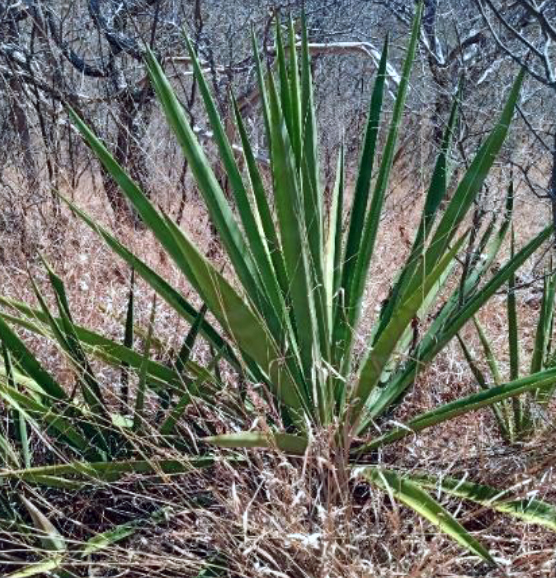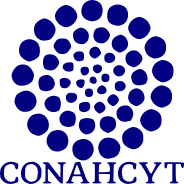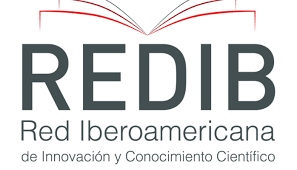Morphometric characterization of populations of the Agave angustifolia complex (Asparagaceae: Agavoideae) in the northern region of Guerrero, Mexico
DOI:
https://doi.org/10.18387/polibotanica.59.7Keywords:
conservation, mezcal, taxonomic complex.Abstract
Of the Agave genus, the A. angustifolia complex is one of the most important groups from an economic and cultural point of view of which more than 20 species have been described. However, there have been few studies that allow us to understand the taxonomic relationships of the group. In this study, wild and cultivated individuals of this complex were morphometrically characterized, with the aim of contributing to the understanding of this group. 25 field trips were carried out and 141 specimens were collected from the Northern Region of Guerrero and a municipality in the Central Region of Guerrero, Mexico, from august 2016 to december 2017. Data on 29 morphometric variables were taken from each specimen for subsequent selection and statistical analysis, these being the Principal Component Analysis (PCA) and the Linear Discriminant Analysis (LDA), in which six and 15 characters were used, respectively. One hundred specimens of Agave angustifolia var. angustifolia were taxonomically identified. (70.92%), 36 specimens of A. angustifolia var. rubescens (25.53%) and five specimens of A. rhodacantha (3.55%), this last species turned out to be a new record for Guerrero. The variables length of the leaf, number of teeth on one side of the leaf, perimeter of the floral peduncle, width of the leaf, number of leaves per plant, length of the terminal spine and average number of viable seeds, allowed the delimitation of the taxa studied. The varieties of A. angustifolia presented overlaps in some specimens, which reflects the high phenotypic variability of both taxa. The LDA turned out to be a useful statistical tool for understanding the phenotypic variables of the A. angustifolia complex.
References
Barrientos-Rivera, G., Esparza-Ibarra, E. L., Segura-Pacheco, H. R., Talavera-Mendoza, O., Sampedro Rosas, M. L., y Hernández-Castro, E. (2019). Caracterización morfológica de Agave angustifolia y su conservación en Guerrero, México. Revista Mexicana de Ciencias Agrícolas, 10(3), 655-668. DOI: https://doi.org/10.29312/remexca.v10i3.1554
Berger, A. (1915). Die Agaven. Beitrage zu einer Monographie. Stuttgart: Gustav Fisher Verlag 295p. DOI: https://doi.org/10.5962/bhl.title.15643
Chase, M. W., Reveal, J. L., & Fay, M. F. (2009). A subfamilial classification for the expanded Asparagaceae families Amaryllidaceae, Asparagaceae and Xanthorrhoeaceae. Botanical Journal of the Linnean Society 161(2): 132-136. DOI: https://doi.org/10.1111/j.1095-8339.2009.00999.x
Colunga-GarcíaMarín, P., & May-Pat, F. (1997). Morphological variation of henequén (Agave fourcroydes, Agavaceae) germplasm and its wild ancestor (A. angustifolia) under uniform growth conditions: diversity and domestication. American Journal of Botany. 84, 1449-1465. https://doi.org/10.2307/2446608
Colunga-GarcíaMarín, P., Estrada-Loera, E., & May-Pat, F. (1996). Patterns of morphological variation diversity and domestication of wild and cultivated populations of Agave in Yucatan, Mexico. American Journal of Botany 83, 1069-1082. https://doi.org/10.1002/j.1537-2197.1996.tb12805.x
Dahlgren, R. M., Clifford, H. T., & Yeo P. F. (1985). The families of the monocotyledons. Structure, evolution, and taxonomy. Springer, Berlin, Germany. 520 pp. https://link.springer.com/book/10.1007/978-3-642-61663-1
Figueredo-Urbina, C.J., Álvarez-Ríos, G. D., García-Montes, M. A., Octavio-Aguilar, P. (2021). Morphological and genetic diversity of traditional varieties of agave in Hidalgo State, Mexico. PLoS ONE 16(7): e0254376. https://doi.org/10.1371/journal.pone.0254376
Flannery, K. (1986). Guilá Naquitz, archaic foraging and early agriculture in Oaxaca, México. Academic Press, Inc. Orlando. Florida. 560 pp. https://doi.org/10.4324/9781315427935
Fragoso-Gadea, T., Gutiérrez, A., Coronado, M. L., Terrazas, T., Ramos-Clamont, G., Vázquez-Moreno, L., y Esqueda, M. (2021). Poblaciones silvestres de Agave angustifolia (Asparagaceae) de Sonora, México: variación morfológica y contenido de azúcares. Acta Botanica Mexicana 128: e1889. https://doi.org/10.21829/abm128.2021.1889
García-Mendoza A. J., Franco-Martínez S. I., y Sandoval-Gutiérrez, D. (2022). El Complejo taxonómico Agave angustifolia: restablecimiento y circunscripción del Agave pacifica en Sonora. En M. Esqueda, M. L. Coronado, A. Gutiérrez, & M. L. Robert (Eds.). Ecología y biotecnología aplicadas al manejo sostenible del agave en Sonora. Universidad de Sonora, México. P. 15-34.
García-Mendoza, A. J. (2011). Agavaceae. En: Flora del Valle de Tehuacán-Cuicatlán. Medina-Lemos R. (ed). Universidad Nacional Autónoma de México - Comisión Nacional para el Conocimiento y Uso de la Biodiversidad. Fascículo 88 Agavaceae Instituto de Biología. México. pp:1– 95. https://www.researchgate.net/publication/285902822_Agavaceae_Flora_del_Valle_de_Tehuacan-Cuicatlan
García-Mendoza, A. J. (2004). Agaváceas. En: A.J. García, M. J. Ordoñez y M. Briones-Salas, Biodiversidad de Oaxaca. Instituto de Biología. UNAM-Fondo Oaxaqueño para la Conservación de la Naturaleza-World Wildlife Fund, México. PP. 159-169.
García-Mendoza, A. J., Franco-Martínez, I. S., y Sandoval-Gutiérrez, D. (2019). Cuatro especies nuevas de Agave (Asparagaceae, Agavoideae) del sur de México. Acta Botanica Mexicana 126: e1461. https://doi.org/10.21829/abm126.2019.1461
García-Mendoza, A. J., Chiang, F. (2003). The confusion of Agave vivipara L. and A. angustifolia Haw., two distinct taxa. Brittonia 55: 82–87. https://www.jstor.org/stable/3218419
García-Mendoza, A. J., Colunga-GarcíaMarín, P., y Bye, R. (1993). Los usos de Agave angustifolia Haw., ancestro silvestre del henequén, en su área de distribución geográfica. En: Peniche P. y F. Santamaría (Eds.). Memorias de la Conferencia Nacional sobre el henequén y la zona henequenera de Yucatán. Gobierno de Yucatán, México. pp. 92-112. http://dx.doi.org/10.13140/RG.2.1.4602.3200
Gentry H. S. (1982). Agaves of Continental North American. The University of Arizona Press. Tucson. 670 p.
Gil-Vega, K., Díaz, C., Nava-Cedillo, A., Simpson, J. (2006). AFLP analysis of Agave tequilana varieties. Plant Science 170:904–909 https://doi.org/10.1016/j.plantsci.2005.12.014
González-Elizondo, M., Villanueva, R. G., Enríquez, I. L., Rojas, L. R., y González-Elizondo, M. (2009). Agaves - magueyes, lechuguillas y noas - del Estado de Durango y sus alrededores. Centro Interdisciplinario de Investigación para el Desarrollo Integral Regional Unidad Durango del Instituto Politécnico Nacional-Comisión Nacional para el Conocimiento y Uso de la Biodiversidad. Durango. 163 pp. https://www.researchgate.net/publication/322243902_Agaves_-magueyes_lechuguillas_y_noas-_del_Estado_de_Durango_y_sus_alrededores
INEGI. (2021). Anuario Estadístico Guerrero Aspectos geográficos. Instituto Nacional de Estadística y Geografía, México. Consultado el 05 de marzo de 2024 en: https://www.inegi.org.mx/contenidos/app/areasgeograficas/resumen/resumen_12.pdf
Judd, W. S., Campbell, Ch. S., Kellogg, E. A., Stevens, P. F. & Donoghue, M. J. (2016). Systematics: A Phylogenetic Approach. 4th ed. Sinauer Associates, Inc. Sunderland, UK. 667 pp.
Kirchmayr, R. M., Arellano, P. M., Estarrón, E. M., Gallardo, V. J., Gschaedler, M. A. Ch., López, R. J. E., Navarro, H. A., Prado, R. R., Ramírez-Romo, E. (2014). Proceso de producción del mezcal. En: Manual para la estandarización de los procesos de producción de mezcal guerrerense. Kirchmayr, R. M. (ed). Fundación Produce Guerrero A. C. México. 28 – 30 p. 231 p. https://ciatej.mx/dyd/manualmezcalguerrerense.pdf
Orestes-Cerdeira, J., Duarte-Silva, P., Cadima, J. & Minhoto, M. 2017. subselect: Selecting Variable Subsets. R package version 0.13. https://CRAN.R-project.org/package=subselect.
R Core Team. 2016. R: A language and environment for statistical computing. R Foundation for Statistical Computing, Vienna, Austria. URL https://www.R-project.org/.
Rivera-Lugo, M. 2014. Variación morfológica y genética del complejo Agave angustifolia en el estado de Oaxaca. MSc. Thesis, Universidad Nacional Autónoma de México. 58 pp. http://132.248.9.195/ptd2014/marzo/0710472/0710472.pdf
Rivera-Lugo, M., García-Mendoza, A., Simpson, J., Solano, E. & Gil-Vega, K. (2018). Taxonomic implications of the morphological and genetic variation of cultivated and domesticated populations of the Agave angustifolia complex (Agavoideae, Asparagaceae) in Oaxaca, Mexico. Plant Systematics and Evolution 304, 969–979. DOI:10.1007/s00606-018-1525-0
Rodríguez-Garay, B., Lomelí-Sención, J. A., Tapia-Campos, E., Gutiérrez-Mora, A., García-Galindo, J., Rodríguez-Domínguez, J. M., & Vicente-Ramírez, I. (2009). Morphological and molecular diversity of Agave tequilana Weber var. Azul and Agave angustifolia Haw. var. Lineño. Industrial Crops and Products. 29. 220-228. https://doi.org/10.1016/j.indcrop.2008.05.007
Trejo, L., Limones, V., Peña, G., Scheinvar, E., Vargas-Ponce, O., Zizumbo-Villarreal, D., & Colunga-GarcíaMarín, P. (2018). Genetic variation and relationships among agaves related to the production of Tequila and Mezcal in Jalisco. Industrial Crops and Products, 125, 140–149. https://doi.org/10.1016/j.indcrop.2018.08.072
Vargas‐Ponce, O., Zizumbo‐Villarreal, D., Martínez‐Castillo, J., Coello‐Coello, J., & Colunga‐GarcíaMarín, P. (2009). Diversity and structure of landraces of Agave grown for spirits under traditional agriculture: A comparison with wild populations of A. angustifolia (Agavaceae) and A. tequilana commercial plantations. American Journal of Botany 96: 448—457. https://doi.org/10.3732/ajb.0800176

Downloads
Published
License

Polibotánica by Departamento de Botánica de la Escuela Nacional de Ciencias Biológicas del Instituto Politécnico Nacional se distribuye bajo una Licencia Creative Commons Atribución-NoComercial-CompartirIgual 4.0 Internacional.



















